I’m so excited to finally share this post with you all since juicing was what started me on this path to eating consciously, shopping responsibly, and living in a way that’s more connected to the natural world. Although it was once confined to the earth-smelling health food stores, local co-ops, or the rare vegetarian restaurant; juicing has now hit mainstream America. I am so excited that it is finally getting the recognition it deserves. In this post, Beginner’s Guide To Juicing, I will give you a rundown of how and why adding juices to your diet can benefit you. It will also include a step-by-step how-to guide, in addition to some of our favorite juice recipes and a 3-Day Juice Cleanse! Once you know the basics of getting started, it will be easy to apply it in your daily life.
A Beginners Guide To Juicing
- What is juicing?
- How can juicing benefit my overall health?
- Are there any side effects to juicing?
- What juicer should I buy?
- How do I store my juice?
- What type of vegetables and fruits can I juice?
- What are the best juicing recipes?
What is Juicing?
Juicing is simply “drinking your food.” Well really, it’s much more than that. I’m not talking about commercially made juices that are full of sugar and artificial flavoring. I’m talking about juicing which involves a process where the natural liquids are extracted from raw fruits and vegetables, leaving you with a juice that is loaded with vitamins, minerals, antioxidants, anti-inflammatory compounds, and phytonutrients, an abundance of goodness.
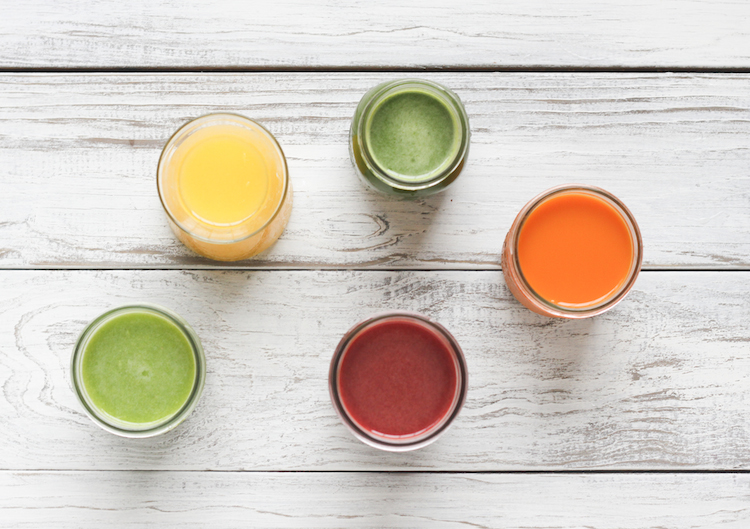
Benefits To Juicing
I can go on and on about all the benefits of juicing but to sum its all up, drinking fresh raw juices is the easiest, fastest, and most economical way of putting a healthy amount of a wide range of nutrients into our bodies.
Fresh vegetable juices, supply you with a huge amount of nutrients that your body needs. The nutrients from juicing are more easily and readily absorbed into your bloodstream, and feed all the cells in your body. This helps every single organ perform at its best.
People often report that when they started to include more juiced in their diet, their bodies began to undergo a transformation. I sure felt this. Here are just a few examples of what many people experience when juicing.
- Mental clarity
- More energy
- Better sleep
- Less stress
- Clear, glowing skin
- Weight loss
- Thick shiny hair and nails
- Better digestion
- Less headaches
- Alkaline body (balanced the body’s pH)
- Improved immune system
- Less joint pain
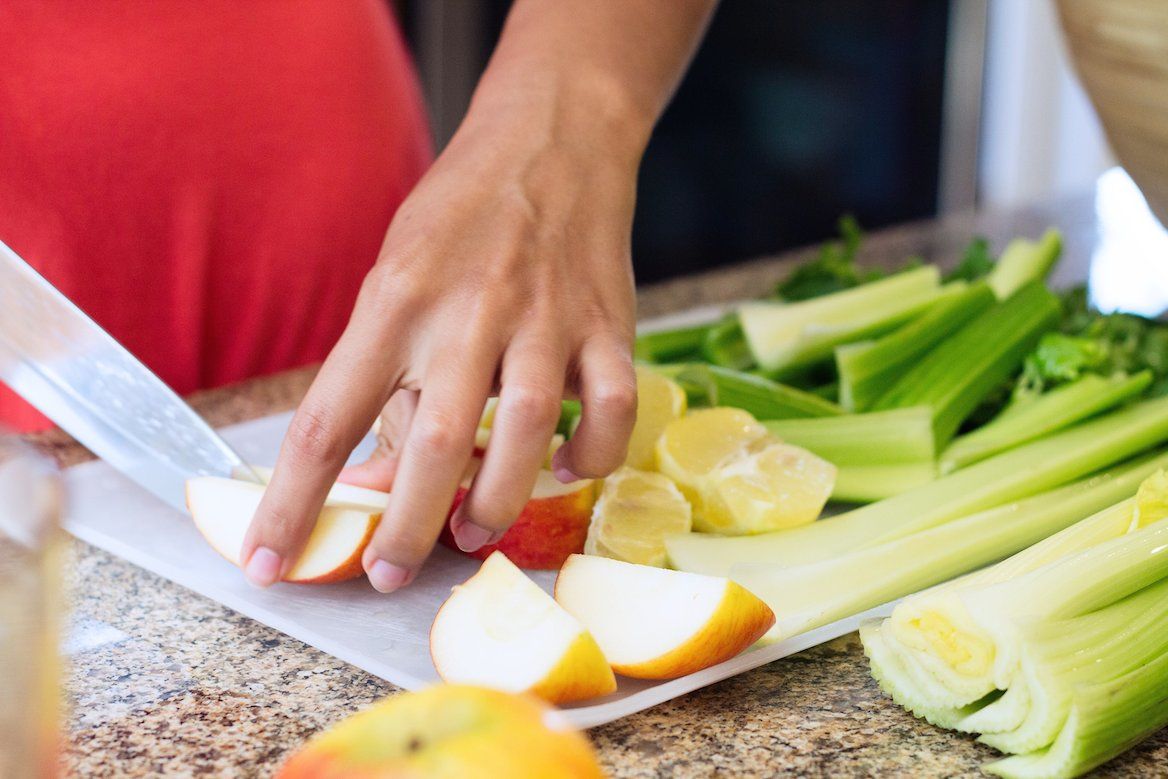
How does juicing work?
When you juice, the cell walls of the produce are broken open and release all the nutrients into a quickly absorbable form making the process of digestion much easier on the body. All the vitamins, minerals, enzymes, amino acids, chlorophyll, phytonutrients, antioxidants, and much more becomes instantly available for your body to use without all the work.
When you consistently drink fresh, raw juice, your whole internal environment changes.
Buying A Juicer
If you ever felt the challenge to eat enough veggies, making a small investment in a high-quality juicer is one of the best steps you can take toward your health. There are a number of different types of juicers offered in today’s market. Unfortunately, there is no one juicer that can do it all. With that being said, you have to first get clear on the qualities you’re wanting in a juicer.
Here I’ll share what you should consider when buying a juicer. From fast-spinning centrifugal juicers to slow-moving masticating juicers, there is a wide range of differences to consider. What functions do you need? What’s the best warranty, how easy is it to clean, and after all of that, what is the best juicer for the money?
It can all get a little confusing. At the end of the day, you want a juicer that meets your needs and suits your unique lifestyle.
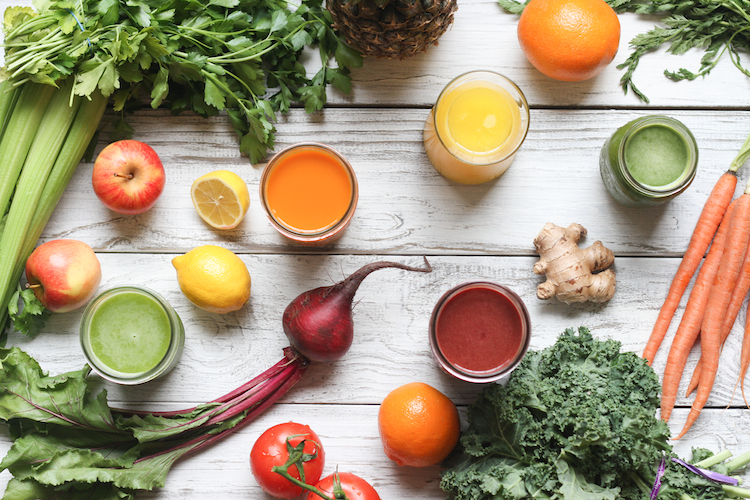
What are the Different Types of Juicers?
The two main types of juicers which you’ll have to decide on are centrifugal vs. masticating juicers. Both are great for different reasons, here I share the pros and cons of each and included a few other types of juicers you might want to consider.
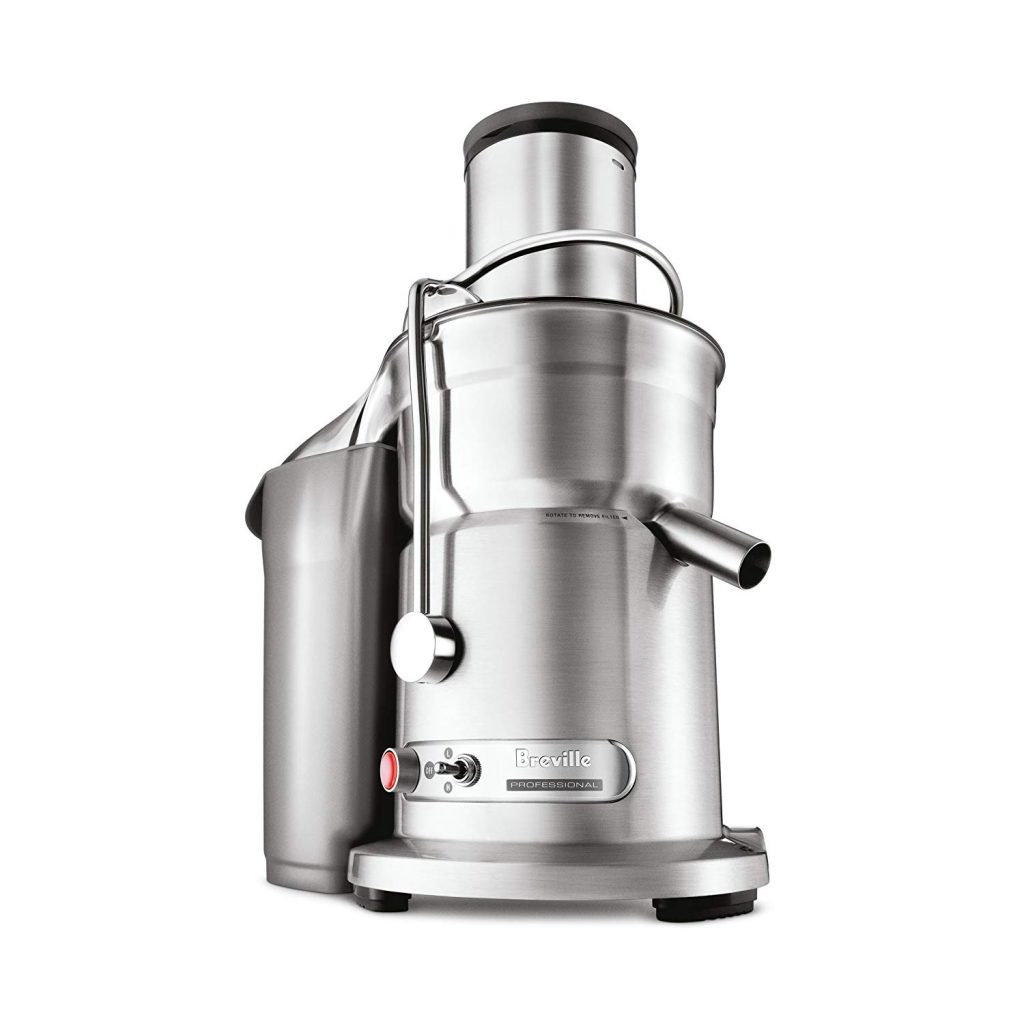
Centrifugal Juicers
Centrifugal juicers are probably the most common juicers. This is because they are typically cheaper and easier to use. This type of juicer uses a high-speed spinning strainer that has a stainless steel blade disc at the bottom. When you drop the produce down from the top of the machine, the spinning disc shreds all the produce into a fine pulp. This releases the juice and then pushes it through the strainer. The high speed of the centrifugal force creates a lot of noise and tends to oxidize the juice more than a slower-moving masticating juicer. This process creates more foam and a shorter storage time.
While these conventional juicers are fairly efficient at churning out fresh fruit juices, they do present a drawback when it comes to juicing leafy greens such as wheatgrass and kale. So if juicing leafy greens is important to you, then you might want to consider a masticating or twin gear juicer instead.
Incidentally, if you are a purist juicer, leafy greens are your best friends and you may not like the fact that centrifugal juicers are not quite up to the task of juicing greens. We don’t own one of these juicers and do not recommend them because of the stated drawbacks listed above.
They are fast!
We only recommend this type of juicer if a short juicing time is your highest priority and let’s face it, sometimes it is. But if you are willing to put a little extra time into juicing, you are much better off with a masticating juicer which will produce a higher quantity and quality of juice that can be stored much longer.
They are loud
Other things to consider with centrifugal juicers is that they are loud, how loud? Pretty loud :-) Loud enough that if you have people sleeping in your home and you are trying to make a quick juicer before you head out in the morning, they will not appreciate it. So if being quiet when juicing is also a priority for you then you might want to skip these types of juicers.
The juice does not last very long
While they are fast at juicing, the juice that is made with these types of juicers typically does not last very long because the juicing process creates a lot of oxidation (the natural browning process that happens when you cut an apple and leave it in the counter) and this is bad for our food and our bodies. This high-spinning process adds a lot of air and therefore foam, which causes a lot of air spots and separation in the juice, so if you like crisp, nonfoamy juice then this is not your best option. If you use a centrifugal juicer then our recommendation is to drink your juice right away, this way it is less oxidized, and you can’t notice the foam and separation as much, some people store this juice for up to 8 hours, although it’s not recommended. In comparison, a masticating or twin-gear juicer will produce a crisp, less oxidized, nonfoamy juice that can be stored for us for 72 hours. So while masticating juicers do take longer to juice, you can make large batches and store them, kind of like meal prepping which can save time in the long run and is preferred by many.
Shorter warranty
While these types of juicers can save you some money upfront, they usually carry a much shorter warranty when compared to masticating or twin-gear juicers. This is something to consider in the long run and you will want to stick to reputable brands that will honor your warranty but if you spend the extra money. The typical warranty for a trusted brand centrifugal juicer is 1 year versus 5-10+ years for a masticating or twin gear juicer.
Conclusion
Despite their drawbacks, these are very popular juicers. They work well for people that want to make a quick juice that they will drink right away, don’t really want to juice a lot of greens and prefer fruit juices, and don’t mind how loud they are when being used.
Pros: Easy to clean and use, less prep time needed, juices fast, juices whole fruits, less expensive, juices fibrous veggies.
Cons: Not optimal for juicing greens, lower yield than a masticating juicer, noisy, juice doesn’t store well in the fridge, nutrients oxidize quicker, shorter warranty.
Highly Rated Top Centrifugal Brands
Good: Breville BJE200XL Compact Juicer, Cuisinart CJE-1000 Die-Cast Juice Extractor
Better: Breville JE98XL Juice Fountain Plus
Best: Breville 800JEXL Juice Fountain Elite, Breville Juice Fountain Cold XL
Masticating Juicers
Masticating juicers are also known as cold-press juicers as their juice extraction mechanism does not produce heat. These juicers mimic the natural mastication or chewing mechanism of our oral cavities and use a screw-like auger to mash and chew the produce into the walls of the juicer, squeezing it through the strainer, separating the pulp and the juice. It is a slow-running juicer, which takes a little longer but creates less oxidation so it’s perfect for all kinds of produce, especially greens. The only downside it that the produce does need to be prepped before throwing it into your juicer due to the small mouth opening.
The auger chews on fruits and vegetables at slower speeds than centrifugal juicers. This slow speed significantly reduces heat and foam generation while increasing efficiency.
They take a little longer to clean and juicer
One of the few drawbacks of this type of juicer is it that they take a little longer to clean, not a ton longer, with some practice the cleaning routine will take about 2 to 3 minutes total. Because they are slow-type juicers, they don’t operate as quickly as a centrifugal juicer but they are still quick to juice. But even though they take longer to clean, you can juice store your juice longer which also has its benefits. But even though they take longer to clean and juice, you can store your juice longer which also has its benefits, which brings us to our next point.
Better longer lasting juice
If you like crisp, nonfoamy juice then a masticating juicer is your best choice. Not only does the juice come out less foamy, but the slow mastication process of the juicer produces less oxidation which is better for your juice and your body. Another good benefit of low oxidation is that you can store your juice longer. So if you are the type of person that likes to prep food and get a lot of juice at once, this is a great juicer for that. This is the type of juicer that we own and we like that we can set it up, run the juicer and come out with lof of good quality juice that we can store in the fridge and drink throughout the week. The juice that these juicers produce can last in the fridge for up to three days and still taste great.
They are very quiet
When compared to centrifugal juicers, masticating juicers are very quiet and won’t wake up your whole house if you are trying to make stealthy juice in the morning. So if you are looking for a quiet juicer then this is the way to go.
They last a long time
As always, you want to purchase your products from a reputable brand. There are cheaper versions of these juicers available online but you will notice that these new, fly-by-night companies only offer a 90-day to a two-year warranty. The thing to consider is resale value, overall value, and ease of warranty use. If you buy a juicer from an overseas company without a good reputation, you might have a hard time getting your product warranted, if at all, and shipping the product to them might cost you more than the product itself. We want to make sure that we are good doing our best to take care of our pocketbooks and the environment by buying products that will last a long time. The reputable brands in this space such as Omega, Hurom, and Tribest all offer a 10+ year warranty which means that their product is built with high-quality materials that will stand the test of time.
Pros: Extracts more juice with higher nutritional value, less foam, juice last longer, quiet, less waste.
Cons: Takes longer to prep produce and make juice, is more difficult to assemble and clean, higher price tag.
Recommended juicers:
Tribest Slowstar Vertical Slow Juice
Omega Vertical Slow Masticating Juicer This is the type that we own and we love it!
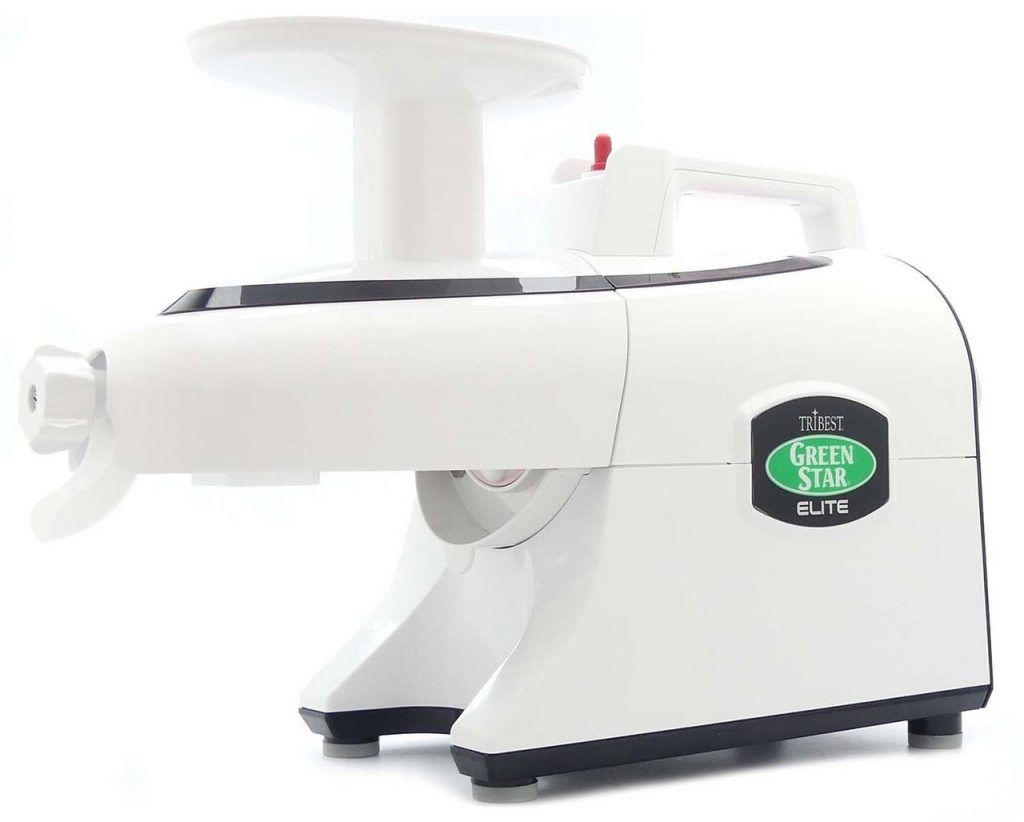
Twin Gear Juicers
A twin-gear juicer is another great juicer. It’s very similar to the masticating juicer and its low-speed rotation protects the cellular structure of the produce. It has two gears that rotate inward with a very fine hairline gap, crushing and grinding produce to extract its juice.
This type of juicer eliminates oxidation and preserves the precious enzymes and nutrients you want in your juice. Juicing leafy greens and soft produce is generally easy with this type of juicer, as they will self-feed as the gears rotate inwards. However, feeding hard produce like a carrot or beets may be a bit of a challenge. The trick is to cut the produce thin and with an angle that goes in first.
They are much larger, heavier, and harder to clean so unless you really care about having the best juicer for greens, we don’t recommend them. If you plan on only juicing greens primarily then they are worth considering. You might also consider Omega’s vertical masticating juicer which is not a twin-gear juicer but still works very well for greens, is a little more compact, affordable, and easier to clean.
Pros: Juice stays fresh longer, has higher juice yield and nutritional value, quiet.
Cons: Takes longer to prep & juice, longer to clean, not optimal for juicing citrus, higher price tag, larger & heavier machine.
Highly Rated Top Twin Gear Brand: Tribest Green Star Elite but you can also consider the Omega Nutrition Center Juicer
Citrus Juicers/ Press
A citrus press is something I recommend looking into if you are big on fresh OJ. Fruit & veggie juicers obviously take a lot longer to use. But if you are looking to make more than just a few ounces of citrus juice on a regular basis, then I recommend you invest in an electrical citrus juicer or citrus press.
Electric citrus juicers have a vertical, ribbed reamer that fits onto a shaft attached to the motor in the base. When you apply pressure by pushing the half-cut citrus down, the motor kicks on, turning the reamer. Many models also have an auto-reverse function.
Manual presses work in a similar way but leave out the reaming step. The press forces the fruit against a perforated cone, breaking up the pulp to release the juice. This is less likely to eat into the citrus pith, thus minimizing bitter-tasting juice. Manual presses are generally more expensive than electric citrus juicers but produce higher quality and when you get into a flow, you can make a lot of juice fast! We used our citrus press to make gallons of juice in one session and did so in a relatively short amount of time. The other pro of a citrus press is that it is very silent, very long-lasting, easy to use, and super fast to clean. They do take a little bit of arm power if you plan to make large portions, like a gallon at a time which most people don’t but its also a nice little workout.
Pros: Easy to assemble and clean, reasonably priced, juices fast, time saver, quiet.
Cons: Not as versatile, only juices citrus.
Highly Rated Top Citrus Juicers/ Press Brands: Cuisinart Citrus Juicer, Breville Stainless-Steel Motorized Citrus Press, Hamilton Beach Citrus Press
Juicing For Weightloss
Now, many people do report feeling great and experiencing drastic weight loss when starting to incorporate more juices and smoothies into their daily life. For many, this is what leads them to juice, to begin with, but it’s important to understand why this is. Fresh fruits and vegetables are naturally low in calories and have a high concentration of nutrients, which binds to toxins and helps carry them out of the body. After the body releases enough toxins, it can easily let go of fat cells that your body created to store all the toxins as a way to protect delicate tissues and organs.
You’ll be able to get more nutrition than you ever have all while consuming far fewer calories. Yes, you can burn those calories through exercise, but most of the excess weight is unusable toxins and waste that your body is storing and can easily be eliminated through the bowels. Yes, that’s right you can poop your way to a smaller waist.
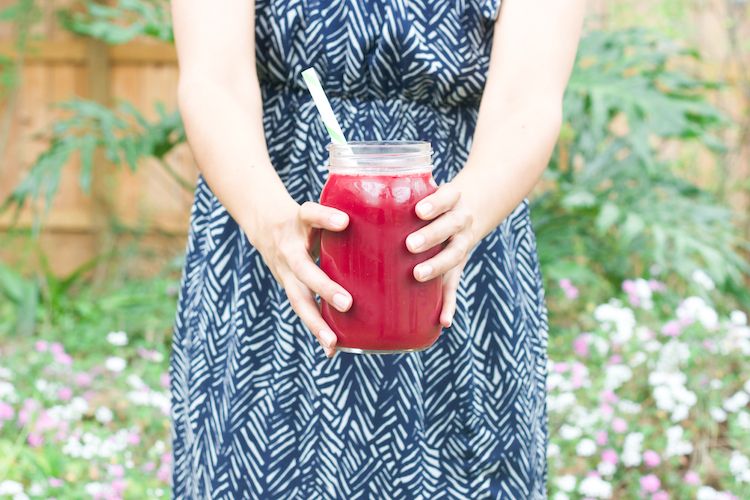
Juice Cleanse
Our bodies are designed to naturally detox every day. It’s part of the self-regulating cleansing process our bodies have. However, we are exposed to a huge amount of toxins on a daily basis, through food, water, air, and even the products that we put on our bodies. And for some people, the detoxification process is slower due to higher exposure to toxins. Therefore, the detox mechanisms become slowed and sluggish causing a chemical imbalance that can throw off your whole body. Juicing is a great way to assist and speed up this process of elimination, and bring it back into balance.
Symptoms Of Detox
- headaches
- nausea
- body odor
- acne breakouts
- mild rashes
Having symptoms really depends on how your body eliminates the toxins. If your body eliminates toxins via the skin, then you may temporarily get some acne breakouts or mild rashes. These symptoms are typically not an allergic reaction to the fruits/vegetables, but actually, a reaction caused by using healthy to force out unhealthy. These symptoms typically only last the first couple of days of the detox, so don’t worry.
It’s estimated that we have an average of at least 5 to 10 pounds of accumulated toxins in our cells, tissues, and/or organs. There are many chemicals, pesticides, heavy metals, drug residues, food additives, and a long list of toxins from our environment that are affecting us on a daily basis. Regular juicing can help improve your body’s ability to detoxify and repair on the cellular level. Doing a juice cleanse can bring immediate weight loss and other significant benefits to your overall health, but continuing to maintain a regular juicing routine, even after the cleanse, will be what gives you the long-lasting health results you desire.
What about fruit juice?
This is a question I get often from people beginning their juice journey. The purpose of juicing is to learn to liquefy green and vegetables on a daily basis and juice fruits and sweet-tasting vegetables in moderation. Why?
The truth is that fruits and sweet vegetables when digested are broken down and turn into glucose and other simple sugars. This isn’t too problematic when you eat the whole fruit with the fiber intact. The fiber will slow down the process and doesn’t spike your insulin (a hormone that regulated sugars in the bloodstream). The sugars in fruit juice, if not used right away will spike your insulin. If it happens continuously it will throw off your metabolism, causing weight gain and/or blood sugar-related illnesses.
If you are overweight or have high blood pressure, diabetes, or high cholesterol, be even more careful about adding sweet fruits to your juices. Starting out I recommend people to use fruits with the intention of slowly minimizing.
How To Store Your Juice
I usually juice in the morning, since fresh is always best. But occasionally, when I’m super busy, I juice the day before. This is perfectly OK. Usually, the juice will last up to 72 hours after it has been juiced. If you keep it longer than that, it may still taste OK, but it will have lost enzymes and other essential nutrients that are the key health benefits of fresh juice.
To store your juice, use a glass jar and fill it to the very top then seal it with an airtight lid. The less oxygen in the jar, the less likely your juice will “oxidize” and be damaged (have less nutritional value). You can also use lemons and other food-saving ingredients in your juice to help it last longer. Storing the juice properly will help with maintaining all of the bountiful nutrients and make juicing part of your daily routine.
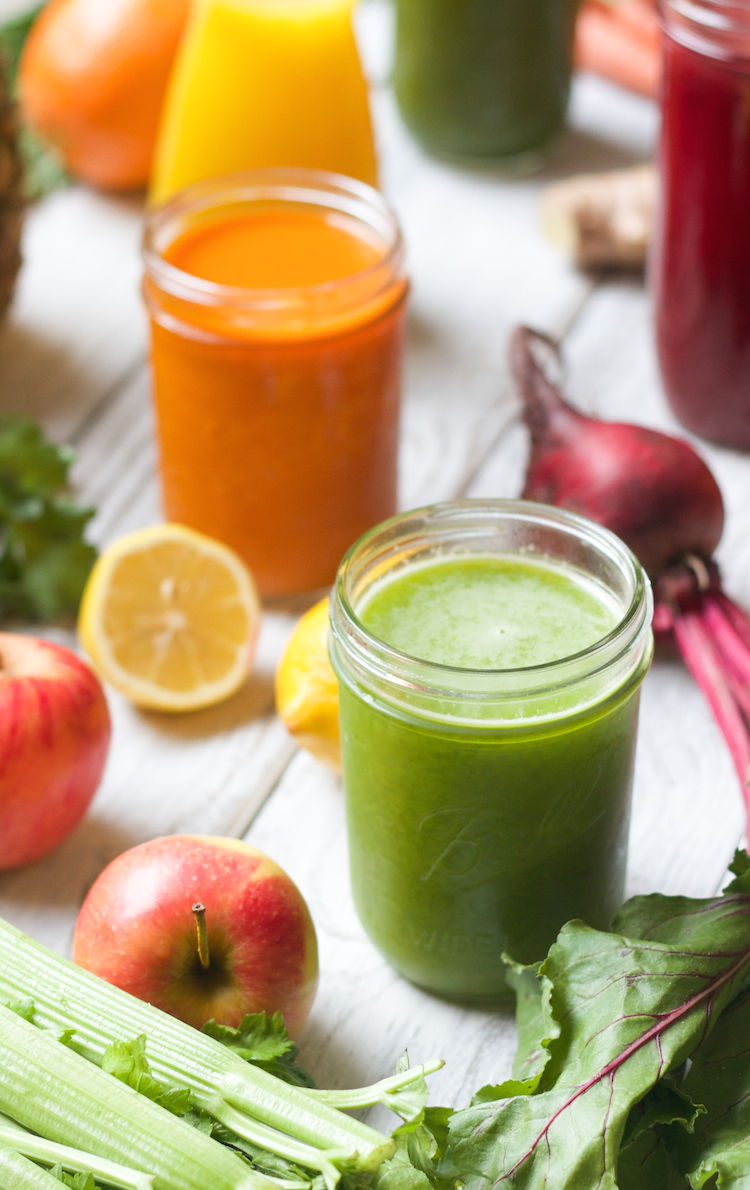
How To Make The Perfect Juice
Slow down and take a breath. Juicing is a kind of mindfulness training. It’s an act of handling your food deliberately; from washing it, cutting it, and smelling the aroma of flavors, to then watching it transform into a flood of colorful juices. Juicing for me is an act of self-care, a time to slow down and get quiet. When picking my produce I often listen to what my body is wanting. You can pretty much juice all different types of vegetables and fruits. There are endless combinations you can use to juice. Here are my 5 simple steps to creating a tasty, powerhouse of fresh juices.
01. Start with your base.
(Use ingredients that are easy to digest and have a high water content)
- celery
- cucumber
- bok choy
- Romain lettuce
02. Add in some greens.
(This adds more nutrients)
- spinach
- kale
- collard greens
- herbs (parsley, cilantro, mint, etc.)
- Swiss chard
03. More veggies, please.
(Use vegetables that are naturally sweet)
- carrots
- beets
- sweet potato
- butternut squash
- bell peppers
04. Natural sweetener.
(Only add a small amount, if any)
- green apple
- fuji apple
- pineapple
- grapefruit
- lemon
- oranges
- watermelon
05. Detoxifying extras.
(This makes your juice even better)
- ginger
- turmeric
- garlic
- aloe vera
- sprouts
*It is ideal to have a higher ratio of vegetables than fruit. Vegetables are the most nutrient-dense thing you can put in your body.
Looking For More Juice Recipes?…
Check out some of my favorite juice recipes on the blog here. If you are looking to juice celery specifically, then you might want to also check out our post on the best celery juicers.
I hope this juicing guide has helped you understand the benefits of juices. As I continue on my juicing journey I will be adding more information and updates for you as well. What other guides would you like me to cover? Comment & share below, I’d love to hear from you and as always, stay tuned :)
Hugs,

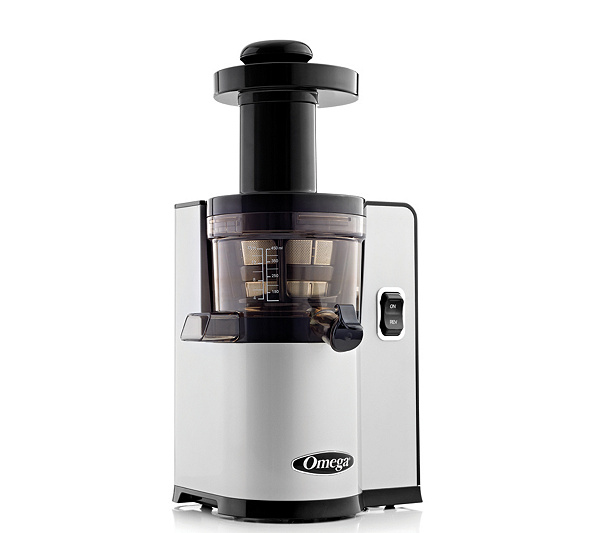
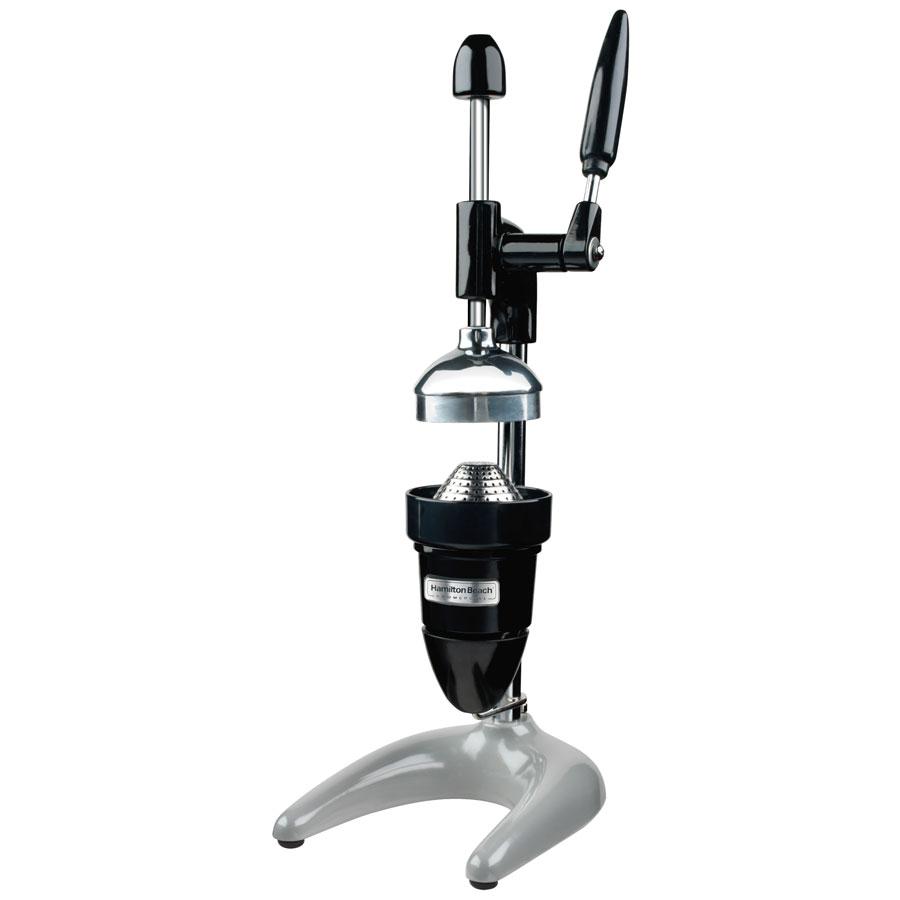
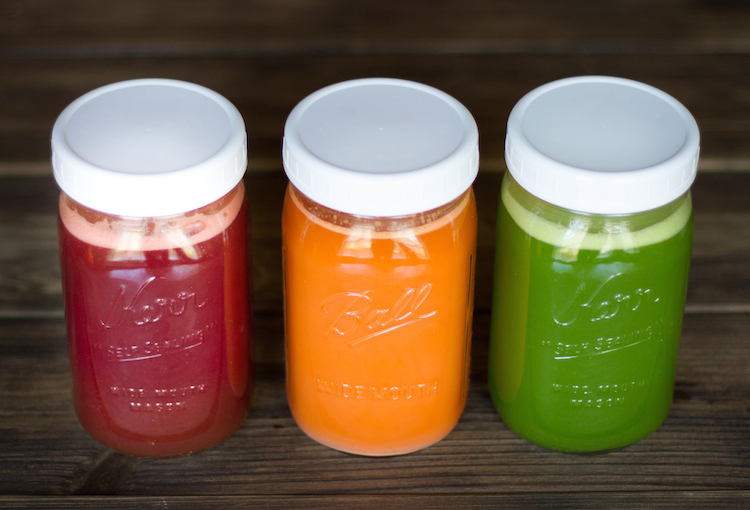

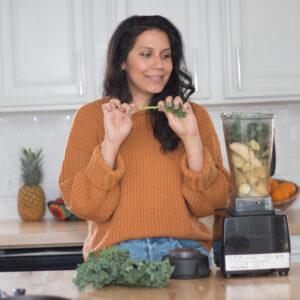
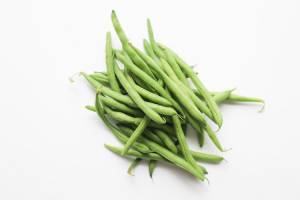
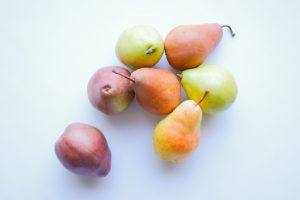
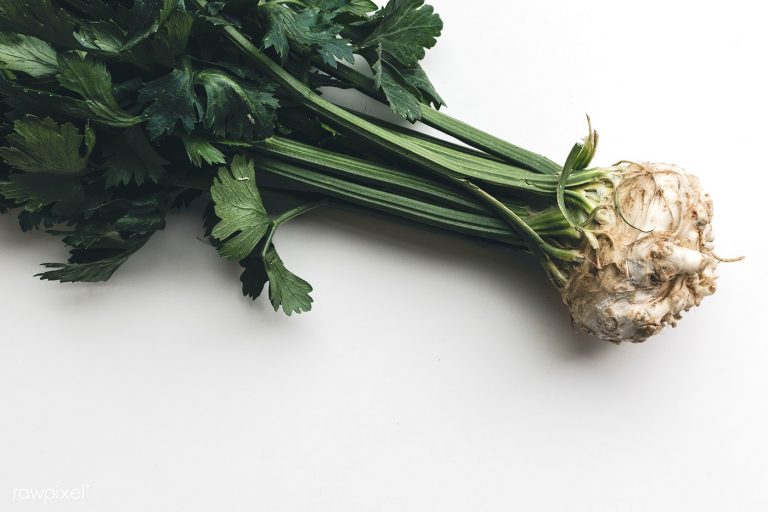
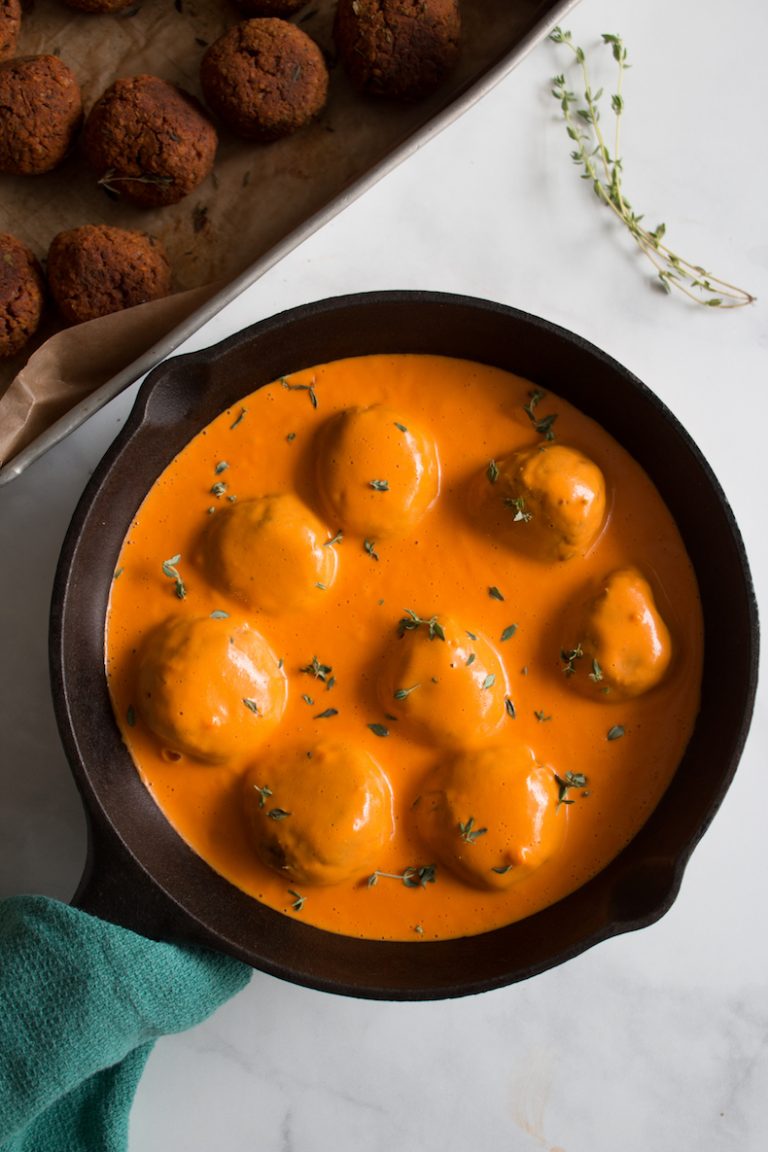
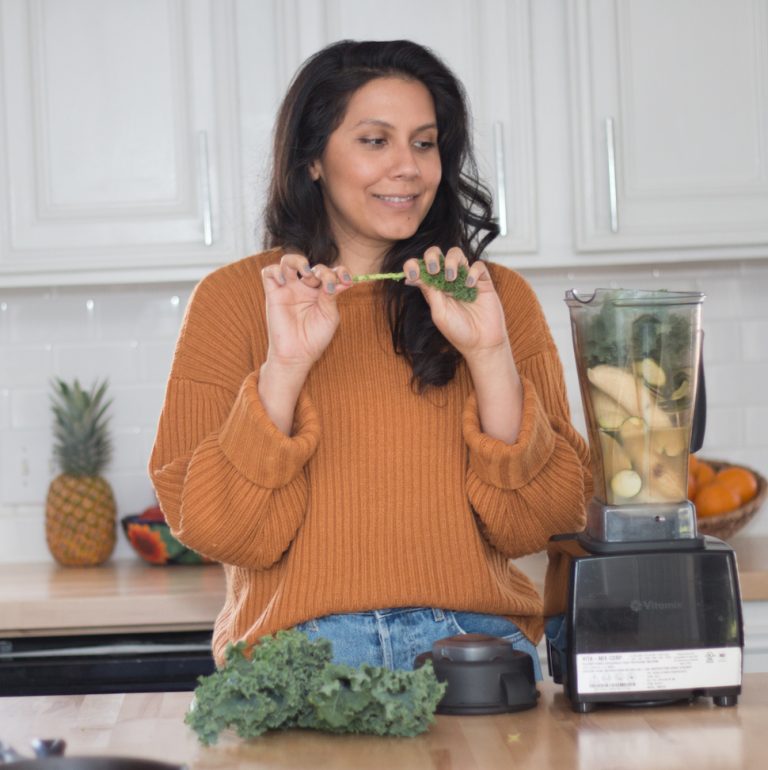
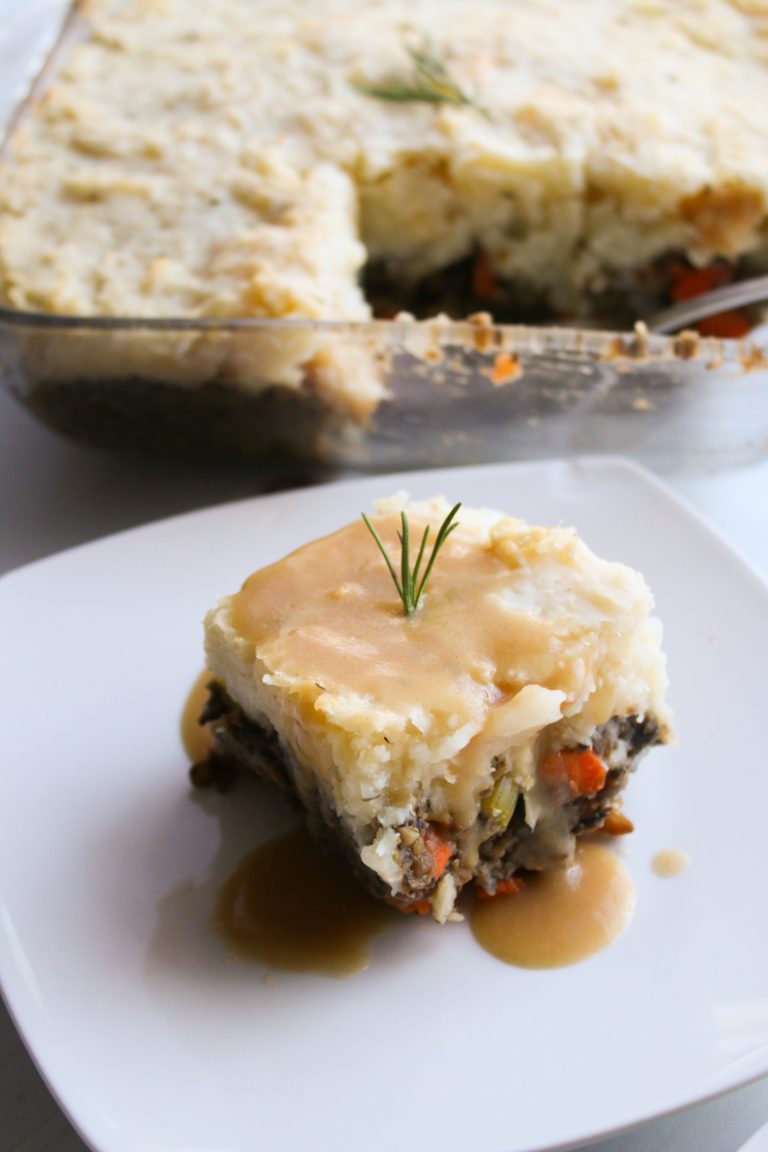
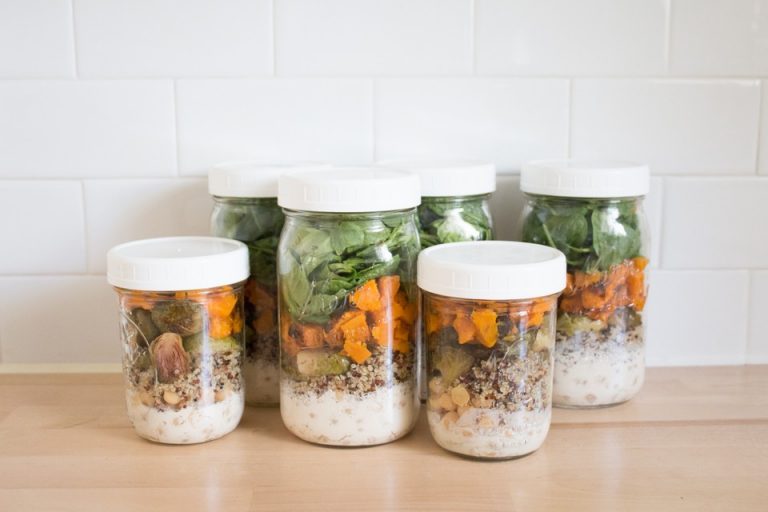

26 Comments
Hey Vanessa.
this is the best post I checked today on the internet; I read a lot of other posts; they have minimal information and tips, but you :)
Thanks for sharing this recipe i really appreciate you for this keep it up
Hello, this article is very informative and very helpful for me to get maximum juice with full of nutrients. these tip will save a lot of juice from waste.
Thank you for sharing such a wealth of information. love it !! Really, it is very impressive . Too much appreciated to your hard work.
this Blog helped me a lot about juicers, I actually write blogs and articles about juicers and blenders. thanks a lot for your knowledge sharing with us.
amazing research and blog, appreciated all the recipes.
Thoroughly Explained article. Love it!! Waiting for more articles like this. Read it completely and got really impressed.
Thanks a lot!!
Very good informative guideline. I think a complete idea of all about juicing and types of juicer given in thisarticle. thanks.
Hello, Venessa thanks for the information i hope it will help me to reduce the juice wastage next time.
Hi, this article is very informative and provided me guidance to get more juice and nutrients from fruits and vegetables
I enjoy you work and would like to refer my clientele over to if you have an affiliate program.
Hey vanessa great post for beginners, I really like ur ideas
Thaks
Great all round post on juicing for beginners.
Thanks Rose, glad you enjoyed the post!
Hey Vanessa, know this is an old post but there are some great tips here. Just tried your spinach orange green juice recipe and it was really good!
Hello Nick, glad that you enjoyed the recipe. Spinach and orange is actually a great combination!